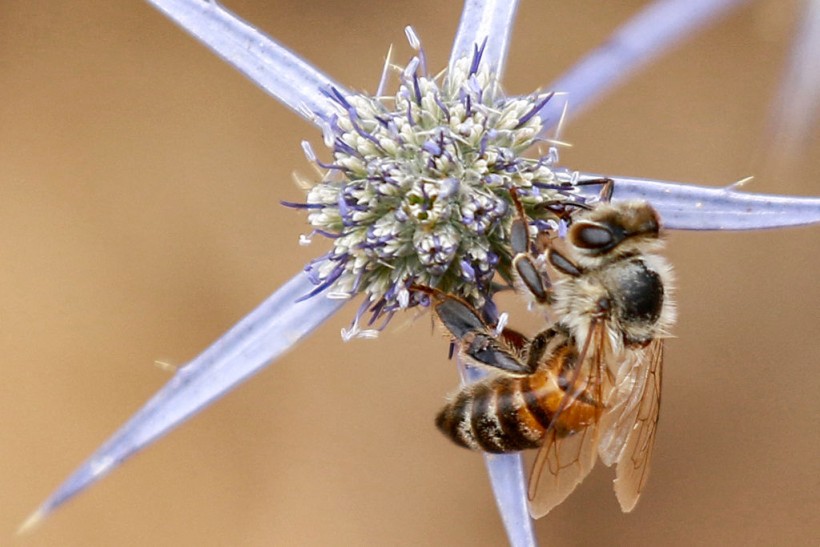A new study found ancient Eucera bee cocoons produced 3000 years ago when Pharaoh used to reign. The amazing and well-preserved fossils were discovered on the Southwest coast in Portugal.
Paleontologists have been on the quest to unearth fossils to help understand the present species. Recently, NWN reported the discovery of new species:
- A new species of mole was discovered in Eastern Turkey, known as Talpa hakkariensis and Talpa davidiana tatvanensis, published in the Zoological Journal of the Linnean Society.
- 23 million years of fossils and seals' relatives, Potamotherium valletoni, helped researchers understand the underwater foraging of seals. The study was published in Communications Biology.
In the latest report in Papers in Palaeontology, experts unearthed rare fossils of ancient bee cocoons that existed during Pharaoh Siamun's reign 3000 years ago.
Bees are one of the oldest species that play a crucial role in ecosystems. As pollinators, bees help to carry pollens in plants and forests, helping to grow and reproduce.
Mummified ancient bee cocoons found in Portugal
 (Photo : by KHALIL MAZRAAWI/afp/AFP via Getty Images)
(Photo : by KHALIL MAZRAAWI/afp/AFP via Getty Images)
A stock photo of a bee. Researchers discovered hundreds of mummified Eucera bee cocoons produced 3000 years ago during Pharaoh's reign. The fossils are exceptionally well-preserved on the Southwest coast of Portugal. Read here.

A stock photo of a bee. Researchers discovered hundreds of mummified Eucera bee cocoons produced 3000 years ago during Pharaoh's reign. The fossils are exceptionally well-preserved on the Southwest coast of Portugal. Read here.
The hundreds of mummified bees in cocoons were exceptionally preserved, requiring extreme methods and care to succeed in fossilization.
Researchers showed a clear picture of the mummified bees using three-dimensional images and microcomputed tomography.
In addition, the discovery of the ancient Eucera bee cocoons allowed researchers to find four more paleontological sites in the area.
The said species of bees is one of the over 700 bees thriving in Portugal. Around the world, there are about 20,000 species of bees.The male Eucera bees have noticeable long antennae, unlike the female ones. They can become active from spring to fall, pollinating flowers and other plants.
According to researcher Carlos Neto de Carvalho, the exceptional preservation helped them to look into the bees' anatomical details, including sexes and monofloral pollen supply.
Carvalho is also a scientific coordinator at Geopark Naturtejo and a researcher at the University of Lisbon.
Also Read: 23 Million Years Old Fossil Helps Understand Ancient Seal Underwater Feeding
Why bees are essential in the environment
Bees have a vital role in ecosystems and the environment. They are hardworking species that provide humans with honey and jobs.
As pollinators, they are essential to global food security by helping to reproduce crops and other food. When bees experience a population decline, it could likely harm the global food supplies.
However, the bee population also suffers from devastating damage due to air pollution, habitat loss, human-caused activities, climate change, global warming, invasive species and extreme weather events.
The urgent efforts to protect bees are essential due to their crucial role in biodiversity.
Recently, parts of Arizona suffered from record-high temperatures due to oppressive heat. Extreme heat also affects the bees in the region.
The report noted the alarming honeybee deaths as rising temperatures melted and impacted their colony.
Did you know?
According to reports, the bees have four wings. At first, it may not be noticeable, but a closer look shows their amazing wings.
Related Article: New Species of Mole in Eastern Turkey: Animal Likely Stayed Hidden for About 3 Million Years
For more similar stories, don't forget to follow Nature News.
© 2024 NatureWorldNews.com All rights reserved. Do not reproduce without permission.



![Climate Change is Reducing Dust Levels Worldwide as Arctic Temperature Warms [Study]](https://1471793142.rsc.cdn77.org/data/thumbs/full/70320/280/157/50/40/climate-change-is-reducing-dust-levels-worldwide-as-arctic-temperature-warms-study.jpg)

